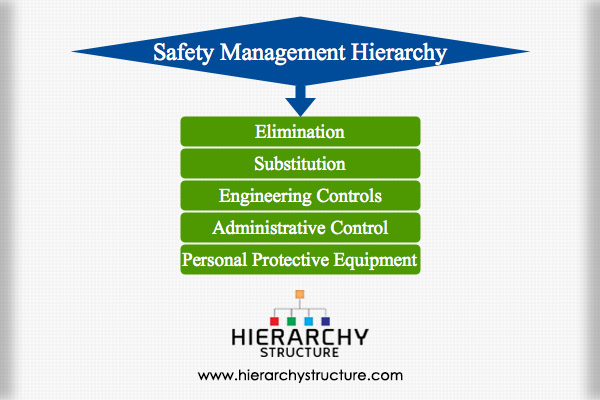There are certain types of risks associated with works in different types of workplaces. In order to reduce them or eliminate them a sort of hierarchical set up is constructed, and is known as safety management hierarchy. Probably the most important step here is to eliminate the amount of risk as much as possible for practical purposes. By controlling or eliminating the amount of occupational hazards, one can keep the workers safe, the company might not have to incur loss, and the nature is protected from various types of pollutions.
While trying to control risks, it is imperative that the points put forward by workers or their representatives are taken into account. There are different methods of controlling the risk and some of the methods are beneficial. The methods could be use singularly or their combinations could be adopted too, in order to achieve optimal success. The safety management hierarchy in existence, this is as follows.

- Elimination
- Substitution
- Engineering controls
- Signage or warning or/and administrative control
- Personal Protective Equipment
Elimination
The most effective hazard or safety control measure is to remove or eliminate the source of the hazard. This can be done by physically removing any hazard that is in existence. This is more often a cheaper and more practical solution than the others. By completely removing the source of hazard or partly removing, it can eliminate risk partially or completely.
Substitution
The second most effective way of eliminating risk is to substitute the source of the hazard by something else. For example, if a lead based paint is substituted by acrylic paint, this will eliminate a lot of security issues. However, it is important to see that the substitute product must not produce another type of security issue.
Engineering Controls
The third measure in the basis of effectiveness is engineering a sort of control, more often physically, so that no damage is done by any safety hazards. This means, physically isolating people from the source of hazard. If there is a radioactive element, it should be kept in a controlled atmosphere, which will stop the radioactivity from reaching people and make them susceptible to certain problems. There can be engineering controls, in the nature of a device or a machine, which can reduce the risk factors management to a large extent.
Administrative Control
Administrative control is nothing more than to bring a change in the way of working of the people. This might mean training the employees to understand the source of hazard, and helping them administer caution, so that they remain safe. Some procedures can be developed to ensure that the machines are handed safely.
Personal Protective Equipment
The last method of the hierarchy is to use personal protective equipments to keep oneself safe. This will mean using of facemasks, earmuffs, protective gears for the eyes, etc.
If the safety hierarchy is followed properly, it can considerably lessen the chances of accidents at the workplace.
